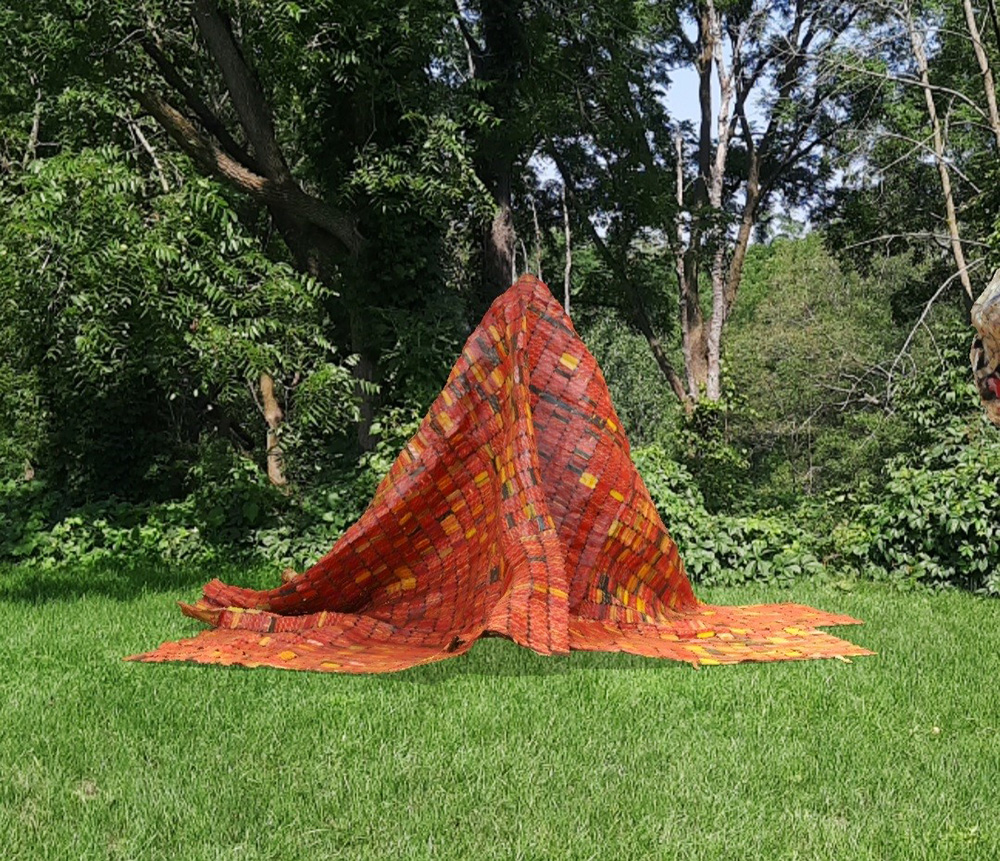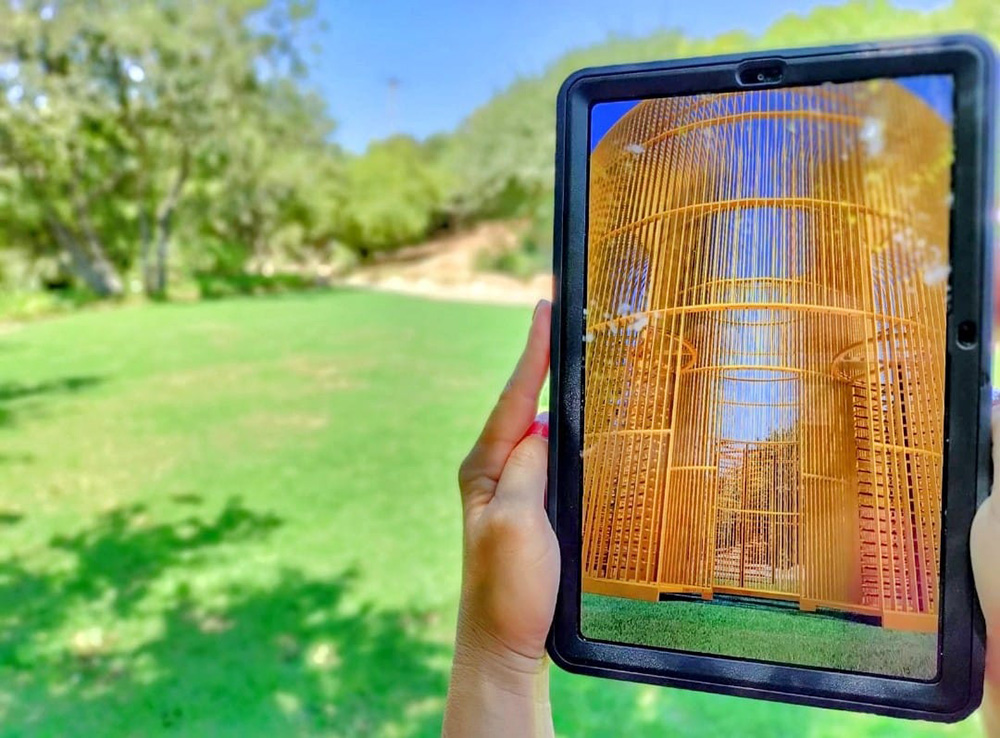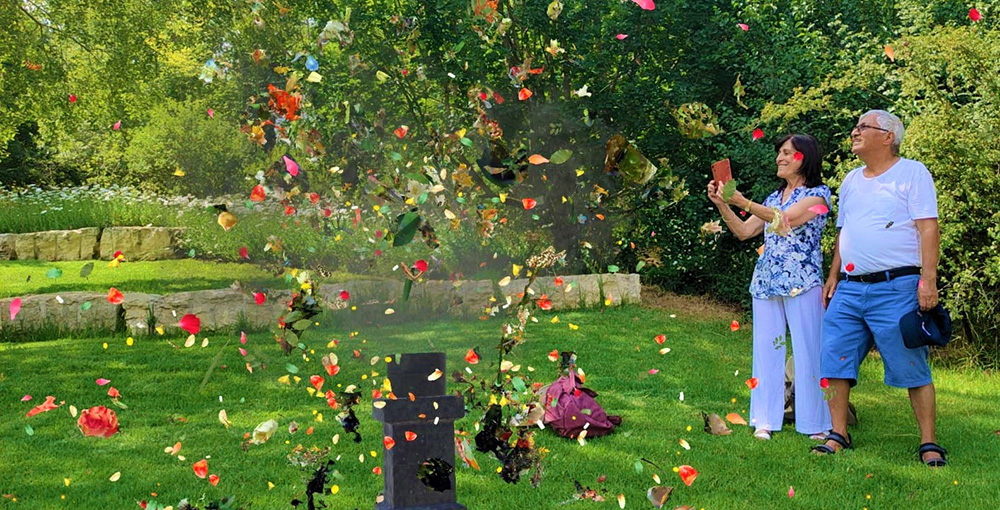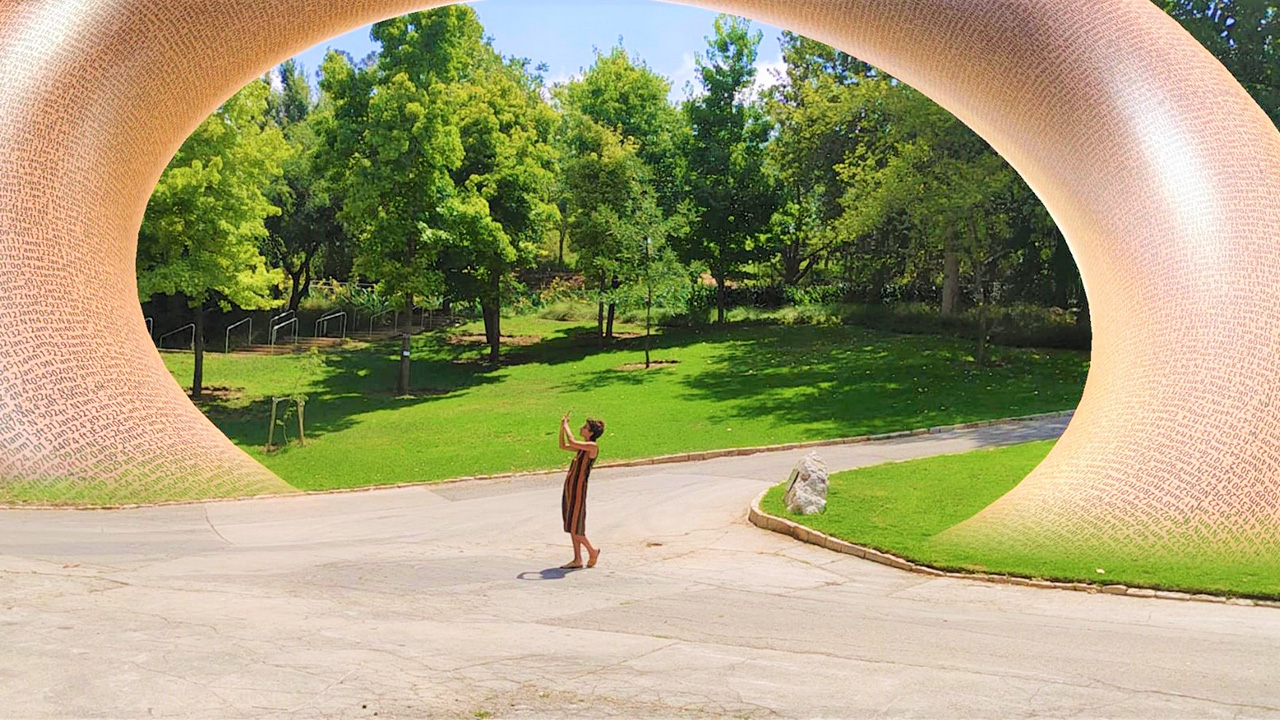Among Israel’s best attended 2020 exhibitions was Returning to Nature, a sculptural reflection on COVID-19 hosted by the Jerusalem Botanical Gardens (JBG). At a time when museums and galleries remained closed under health restrictions, visitors flocked to the Capital eager to experience culture beyond their screens.
The organizers, too, faced limitations. Unable to import work, lead curator Hadas Maor turned to private collectors and site-specific commissions, ultimately presenting 16 works from Israeli artists, several displayed publicly for the first time. The show questioned the relationship between nature and artifice, as well as orthodox practices associated with sculpture exhibitions, such as insurance and transportation costs.
JBG’s latest exhibition, Seeing the Invisible, revisits these issues, but on a global scale, further blurring the lines of natural and artificial, local and global, private and public with groundbreaking use of augmented reality (AR).

“AG + BA” by El Anatsui at the Royal Botanical Gardens, Ontario, Canada. Image: Courtesy of the artist, October Gallery, London, and Goodman Gallery, London.
For close to a year, 12 botanical gardens across five continents will simultaneously present visitors with the same exhibition of 13 AR artworks, all accessible through a single smartphone app. The thematics and technology are constant, all initiated and coordinated the team in Jerusalem, but each garden offers its own route and curation, ensuring a visit to Kirstenbosch, South Africa, Sarasota, Florida, or Edinburgh’s Royal Botanic Garden are drastically different — to say nothing of the respective floras and climates.
“Seeing the Invisible was first conceived with only the Botanical Gardens in Jerusalem in mind,” Hannah Rendell, JBG’s Executive Director tells Jing Culture & Commerce, “but it was very clear that Seeing the Invisible should carry a global message surrounding art, tech, and nature, as well as the issues surrounding climate change, biodiversity and our environment.”
This message is partly delivered through the format of the exhibition itself with visitors masked-up and exploring a natural, if highly-sculpted, space with the aid of a digital screen, something co-curator Maor terms a “phygital experience, one combining the physical location and the digital manifestation.” Crucially, at a time of flourishing online exhibitions, the exhibition may exist digitally, but it can only be experienced in specific physical spaces. Then there are the artworks themselves, which probe further, posing more specific questions.
Ai Weiwei invites visitors to walk through his “Gilded Cage” and see gardens anew from behind golden bars, Ori Gersht presents a radiant bouquet of flowers that ruptures violently upon a visitor’s approach, and Refik Anadol questions the future of nature through an artificial intelligence work built out of 68 million images of the natural world that appear in a state of constant flux.


Above: Ai Weiwei, “Gilded Cage,” Jerusalem Botanical Gardens. Image: Jacob Rendell; Below: Ori Gersht, “Forget Me Not,” Jerusalem Botanical Gardens. Image: Courtesy of the artist
Supported by international non-profit Outset Contemporary Art Fund, Seeing the Invisible not only required constant communication between JBG, the 11 gardens, and 13 artists, but also the team of technologists at Khora, the Copenhagen-based VR-AR studio that rendered the artworks and the app on Unity, a video game software.
In what co-curator Tal Michael Haring describes as an endless stream of Zooms, emails, and WhatsApp messages, they developed concepts alongside the artists — many of whom were creating works with no physical materiality for the first time — and relayed the information to Khora. From there, Khora developed the artworks through step-by-step discussions with the artists and created touring routes in each of the gardens using extensive mapping and Google Earth explorations.
The result is a GPS-based app that identifies a visitor’s location in real time and automatically conjures the exhibition’s AR artworks when a visitor approaches. From Melbourne to Denver, visitors will face the same provocative questions in works bleak and hopeful, an experience Maor and her team say has changed how they view the potential of AR.
“The technology goes way beyond digitally manifesting and augmenting something that doesn’t exist physically,” Maor says. “AR is a tool enabling innovative artists to rethink the very notion of the art object and viewer relationship.”



